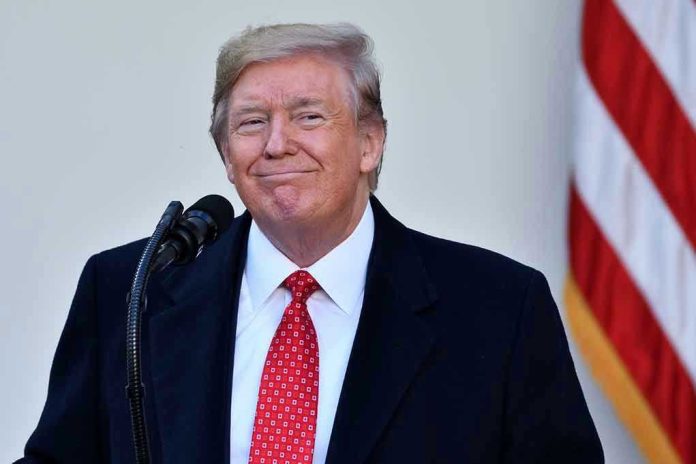
Cracker Barrel’s swift logo reversal showcases the power of tradition and political influence over corporate decisions.
Story Highlights
- Cracker Barrel reverts to its classic logo after significant backlash.
- Former President Trump publicly criticized the logo change.
- Customers expressed strong opposition to the new design.
- The incident highlights the tension between modernization and tradition.
Cracker Barrel’s Branding Controversy
In early August 2025, Cracker Barrel unveiled a new text-only logo, replacing its iconic “Old Timer” illustration. The redesign aimed to modernize the brand’s image but was met with immediate backlash from customers and political figures, including former President Donald Trump. Within a week, Cracker Barrel announced the reinstatement of its original logo, succumbing to public pressure and demonstrating the significant influence of customer and political feedback on corporate decisions.
The backlash against Cracker Barrel’s logo change was swift and widespread. Loyal customers, known for their attachment to the brand’s traditional Southern country theme, perceived the new design as a loss of authenticity. Political figures, including Trump, amplified the controversy by publicly advocating for a return to the classic logo. This pressure proved pivotal in Cracker Barrel’s decision to revert to the “Old Timer” design, highlighting a bottom-up power dynamic where consumer voices significantly impacted corporate strategy.
Responses and Developments
On August 26, 2025, Cracker Barrel officially announced the return of the classic logo on social media, thanking customers for their feedback. The company’s statement emphasized their commitment to listening to customer voices, positioning themselves as responsive to tradition and consumer sentiment. Trump’s commentary, urging the company to manage its brand better in light of customer response, further underscored the political influence on corporate decisions.
The incident served as a cautionary tale for other legacy brands considering major rebranding efforts. It demonstrated the risks associated with changing iconic elements that hold emotional significance for loyal customers. This experience may lead Cracker Barrel and similar companies to exercise greater caution in future branding decisions, balancing modernization with the preservation of traditional brand identities.
Implications and Industry Impact
In the short term, Cracker Barrel’s decision to revert to its classic logo restored customer goodwill and brand loyalty. The incident garnered significant media attention and public discourse, potentially boosting the brand’s visibility. However, it also underscored the tension between modernization and tradition in American business, particularly for legacy companies with strong brand identities.
In the long term, this episode may influence industry standards for customer engagement and responsiveness. It highlights the enduring power of tradition, customer loyalty, and political influence in American brand management. As companies navigate the complexities of modern branding, Cracker Barrel’s experience serves as a reminder of the importance of aligning corporate strategies with consumer expectations and values.
Cracker Barrel Restores Old Logo After Backlash Over Redesign https://t.co/RUO6SVlcBM
— peterverbeeck (@pverbeeck2) August 27, 2025
Overall, the Cracker Barrel logo controversy illustrates the complexities of balancing brand modernization with the preservation of traditional values, a challenge faced by many legacy brands. The incident underscores the importance of consumer feedback and political influence in shaping corporate decisions, offering valuable lessons for companies navigating the evolving landscape of brand management.
Sources:
ABC News: Cracker Barrel Old Logo Redesign Controversy



